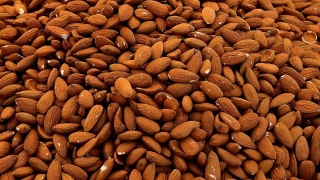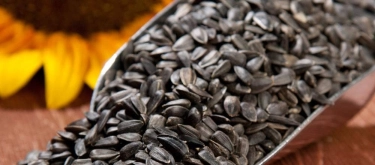Almond: Taste Profile, Aroma, Benefits and Health Risks
Almond (Prunus dulcis) is one of the oldest cultivated nuts, valued for its delicate, nutty flavor and versatile culinary applications. Originating from the Middle East and spreading through Mediterranean trade routes, almonds are now a global staple, used in both sweet and savory dishes. From marzipan and almond milk to sauces and pastries, they remain an essential ingredient in many cuisines.
Almond is a tree nut and one of the most common food allergens worldwide. Individuals with nut allergies must avoid it entirely. Almonds are gluten-free and lactose-free, but cross-contamination is possible in processed foods. Pregnant women can consume moderate amounts unless medically restricted.
What does Almond taste like?

Complete Sensory Description
-
Taste: Raw almonds have a mild, slightly sweet nutty taste with a faint bitterness from tannins in the skin. Blanched almonds are sweeter and cleaner. Roasted almonds intensify to a deep, buttery, caramel-like richness with faint smoky and toasted notes.
-
Aroma: Fresh almonds have a light, sweet aroma with marzipan-like undertones (benzaldehyde). Roasting releases stronger aromas of caramel, butter, and warm spices.
-
Texture: Raw almonds are firm and crunchy. Blanched almonds are slightly softer. Ground almonds yield a fine, grainy meal, while almond paste and marzipan are smooth and pliable.
-
Appearance: Oval-shaped, light brown nuts with thin skin; blanched almonds are ivory-white. Almond flour appears pale beige, while almond butter has a creamy, golden tone.
In-depth Flavor Analysis
The flavor of almonds is primarily driven by benzaldehyde, the compound responsible for the marzipan-like taste.
-
Raw almonds contain amygdalin in trace amounts, which breaks down into benzaldehyde and hydrogen cyanide in bitter varieties (non-edible).
-
Roasting initiates Maillard reactions, producing pyrazines that enhance nutty and toasted flavors.
-
Fat composition: Almonds are rich in oleic acid (like olive oil), giving them a smooth mouthfeel and prolonging shelf life.
-
Varietal differences:
-
Nonpareil (California) → mild, sweet, thin skin.
-
Marcona (Spain) → round, buttery, premium for desserts.
-
Bitter almonds (inedible raw) → used industrially for almond extract after detoxification.
-
Varieties and Culinary Applications
-
Sweet almonds: For eating, cooking, confectionery.
-
Marcona almonds (Spain): Popular in Mediterranean cuisine, often fried in olive oil and salted.
-
Blanched almonds: Basis for almond flour, marzipan, almond milk.
-
Culinary uses:
-
Ground into flour for gluten-free baking.
-
Almond butter as a spread.
-
Almond milk as dairy substitute.
-
Sliced/roasted almonds in salads, rice, pastries.
-
Integral to dishes like baklava, frangipane, Romesco sauce.
-
Selection and Storage
Choose almonds that are uniform in color, with no cracks or rancid smell. Fresh almonds should taste mildly sweet, never bitter or musty. Store in airtight containers, preferably refrigerated, to slow down oil oxidation. Vacuum-sealed packs prolong shelf life up to a year.

Nutritional Insights
Almonds are nutrient-dense, with:
-
High monounsaturated fats → support cardiovascular health.
-
Rich in vitamin E (25 mg per 100 g) → antioxidant, skin health.
-
Magnesium and potassium → blood pressure regulation.
-
Fiber and protein → satiety and digestive support.
-
Clinical studies link almond consumption to reduced LDL cholesterol and improved insulin sensitivity.
Expert Insights & Culinary Tips
-
Roast almonds at 150–160 °C (300–320 °F) for 10–15 minutes to maximize flavor without acrylamide formation.
-
Soak overnight and peel for softer texture, ideal in smoothies.
-
Pair almonds with chocolate, citrus (especially orange), cherries, or coffee.
-
Almond flour improves moisture retention in cakes and pastries.
Interesting and Curious Facts
-
Almonds were found in Tutankhamun’s tomb, showing their value in ancient Egypt.
-
In Italy, sugared almonds are a symbol of weddings and fertility.
-
Spain celebrates almond blossom festivals in late winter.
-
Almond trees are among the first to bloom in early spring, often before leaves appear.
Harm and Dietary Considerations
-
Allergy risk: Severe in sensitive individuals (may trigger anaphylaxis).
-
Excess intake: Can cause weight gain due to high caloric density.
-
Roasting at high heat: May form acrylamide.
-
Infants: Risk of choking; almond milk not suitable as infant formula replacement.
Religious Dietary Considerations
Almonds are plant-based and acceptable in all major religions (Islam, Judaism, Hinduism, Buddhism, Christianity, vegan/vegetarian diets). Kosher and Halal certifications are common in commercial almond products.
Final Thoughts & Sensory Journey
Almonds offer a journey from subtle sweetness to deep roasted richness. Their versatility — raw, roasted, ground, or processed into milk and butter — makes them a cornerstone of global cuisines. They embody both simplicity and complexity, from ancient history to modern health-conscious diets.
Resources
-
Sathe SK, et al. Handbook of Nuts and Seeds, CRC Press, 2016. ISBN: 978-1466589933.
-
Ros E. “Health benefits of nut consumption.” Nutrients, 2010. DOI: 10.3390/nu2070652.
-
Yada S, Lapsley K, Huang G. “A review of composition and health benefits of almonds.” J Food Sci, 2011. DOI: 10.1111/j.1750-3841.2011.02387.x.
-
Casas-Agustench P, et al. “Almond consumption and lipid metabolism.” British Journal of Nutrition, 2011. DOI: 10.1017/S0007114511000710.


